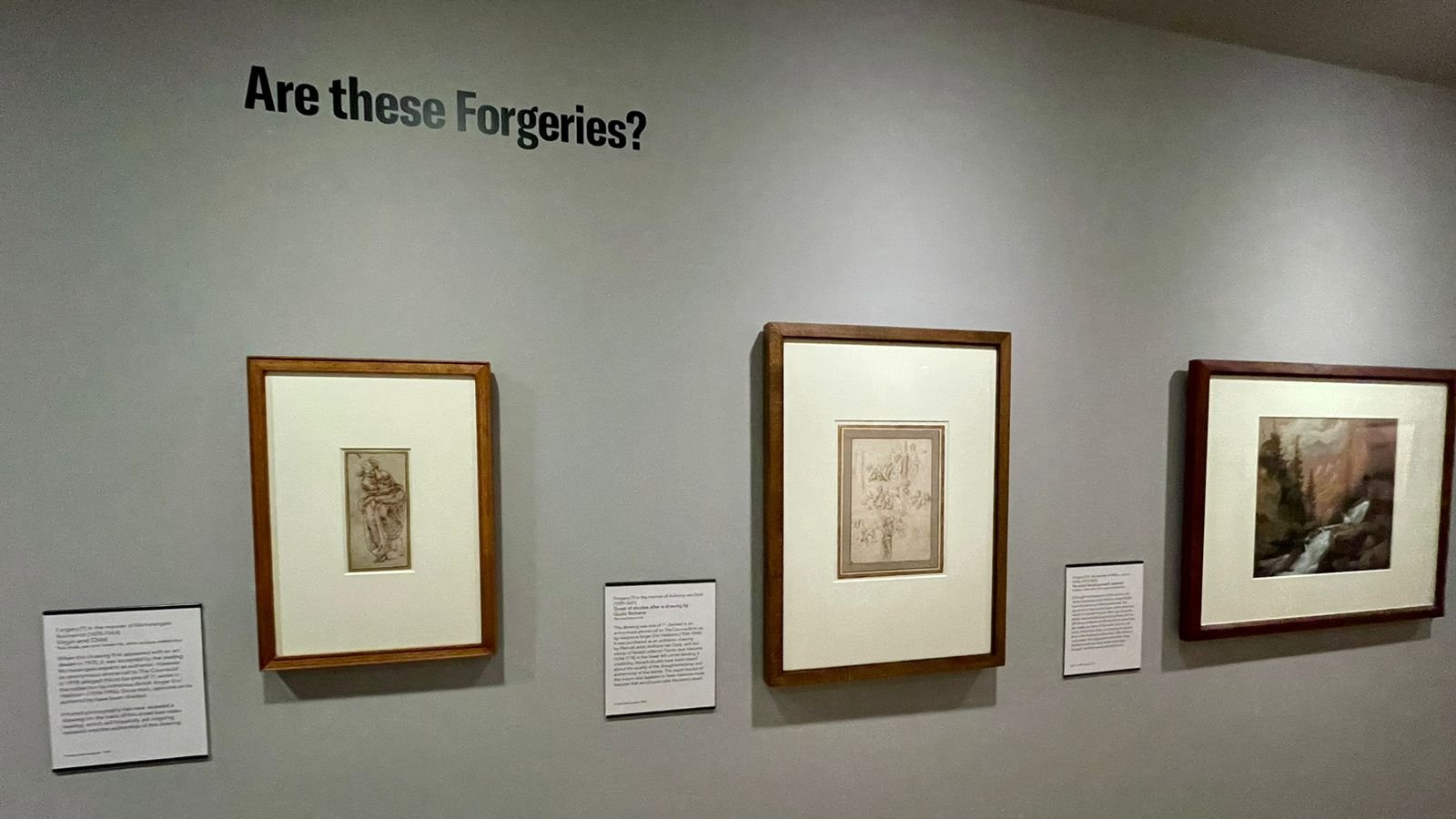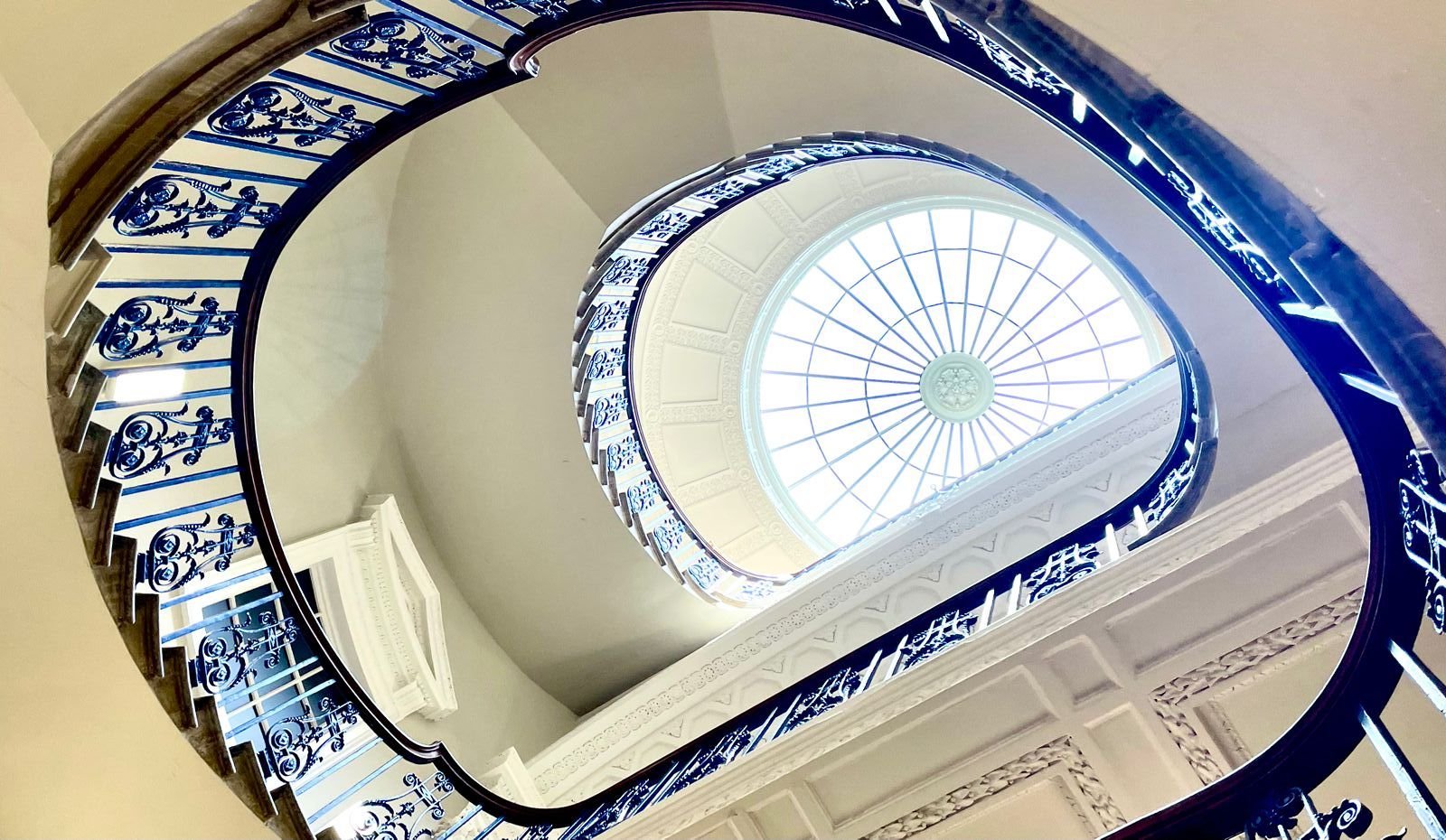'Is it Fake?' The question AI inherited from Art
Courtauld’s Art and Artifice
Tate Modern is the one museum people talk about when they discuss art in London. Never have I heard the Courtauld be mentioned in this context. To be fair, it’s really more of an institute or gallery, and the collection is less vast and diverse than Tate’s. But it has some major pieces on display, most notorious of them perhaps being Van Gogh’s self-portrait without the ear, and several pieces by Gauguin, who was somehow involved in the ear-cutting situation.
The whole place is a succinct gathering of major artists like Manet, Degas, Cézanne, Renoir, and several Flemish, Medieval and Renaissance masters, in a fantastic building with embellished cantilevered stone stairs. Perhaps even more attention-grabbing than the pedigree of the collection in the classic limestone building is the exhibition that opened on the 17th of June.
“Fakes from the Collection”
Yes, fake as in forgery.
The Art and Artifice expo explores not only several types of fake pieces but also different types of intent behind their production. Of course, some were produced for financial gain, such as those made to look old and expensive but containing paint pigments or nails which didn’t exist in the period they were claimed to be from. Nineteenth century forgeries of medieval paintings on wood, for instance, were uncovered because nails from the alleged date of the work were not produced in the size and standard shape revealed in the x-rays of the pieces. Others had fake signatures and were claimed to be from the “study” days of the artist.
The most fun, though, are the ones with unexpected stories. Some pieces were created to fool Nazis, as was the case of the forger Han van Meegeren. He created fake Vermeers during the Second World War and sold it to elite members of the Nazi party. The one on display at the exhibition is a forgery of a painting by van Baburen, a piece featured on the background of two of Vermeer’s paintings. Van Meegeren was applauded for this scheme, not only because of its disruption of the notorious looting and mistreatment of fine art by the Nazis, but also because his forgeries became a valuable technique investigation tool for art students at the institute.
Other pieces were just artists practicing their craft by replicating classics, which were never meant to deceive a buyer. And in some cases, researchers still don’t know the true authorship of the piece, as is the case of a Boitard drawing. The technology for producing smooth, grid-less paper wasn’t widely available until decades after his death, but it is possible, though unlikely, that he came across it in the last year of his life, around the time of the ‘revolutionary invention’. Attendees are invited to closely examine the paper with large hand-held magnifying glasses to identify the differences between each drawing.
Louis-Philippe Boitard at Courtauld
It’s hard to not see parallels with generative artificial intelligence today and its potentially deceitful images. Deceit is nothing new, in media or art, and whenever a new technology comes around, we must adapt our methods of interpretation and consumption of its content. If it’s a new paper-making method, paint pigment, nail type, or digital image-editing feature, innovation is unstoppable, and change is inevitable. How we handle the technological changes of our era, and our ability to keep up with them, defines whether innovation symbolizes the advancement or detriment of society.
Earlier in June, just a few days before the opening of the Courtauld expo, NPR published an article with suggestions on how to identify if a digital image was fake; meaning, generated by AI. As a tool, we know that nowadays generative AI is unable to realistically portray hands, teeth, accessories such as jewelry, and complex backgrounds. Holding up a proverbial magnifying glass to these details can give away fake images with relative ease.
Some of the images believed to be real and widely shared online, such as the one of the Pope wearing a large white puffy coat, could have easily been, and were, exposed as fakes, though not soon enough to prevent them from going viral. Looking at history, we see that the struggle to identify forgeries is not unprecedented in the realm of images made to deceive in high art or in mass media. The same way it is possible to be unsure of the veracity of a signature, we may be unsure of the source of a realistic-looking digital image. All this means is that we must keep up with technological advances and invest in a modernized education system.
Anyone is bound to slip occasionally and fall for a fake. Some details might slip through the cracks, some days the vetting process might be sloppier than others, that’s natural. Not to mention that it’s just a matter of time until digital technology is updated to make AI better at portraying things like hands and we will be caught off guard once again.
AI’s current inability to produce realistic images of hands it quite comical, considering hands may be the very first subject of human artistic expression. From ancient pictographs made 40 thousand years ago until classics of the 19th century, hands have been a major focus of human art, especially for painters. Even when they are hidden, hands stand out and become a source of speculation and conspicuous meaning.
Da Vinci was notorious for his study of hands, and Michelangelo created one of the most reproduced pair of hands in Western history–in The Creation of Adam. Between the 18th and 19th centuries, when a wave of elite European portraits depicted men with hands hidden in their jackets, it was speculated that perhaps paintings were cheaper when the painter didn’t have to focus on drawing fingers. There is no evidence for that. The pose most likely symbolized power and status, as it was popular with people like Napoleon, for whom money was no obstacle.
Detail of Michelangelo’s The Creation of Adam and Napoleon.
Either way, we were never expected to take art, and media, at face value. For hundreds of years, we’ve had to keep vetting processes and analyses up to date, we’ve had to learn to ask the right questions at the right time, and this just happens to still be as true now as ever.
High-tech is not synonymous with high standards, and nothing corroborates this idea more than high art. Will a robot soon produce a perfect forgery, or perhaps its own masterpiece? If it does, this threat is possibly a tale as old as art itself. Trying to halt innovation will be futile, and expecting change to not meet any resistance is also unrealistic. We’ve known that art made without heart, made as nothing more than a replica, is not valuable. And perceiving value does take training. It takes a robust education that incentivizes critical analysis and requires resources. A better use of our time is learning how to hold up a magnifying glass, and not so much campaigning against technologies which may or may not be used for malignant deceit.
Mirna Wabi-Sabi
Mirna is a Brazilian writer, site editor at Gods and Radicals and founder of Plataforma9. She is the author of the book Anarcho-transcreation and producer of several other titles under the P9 press.






